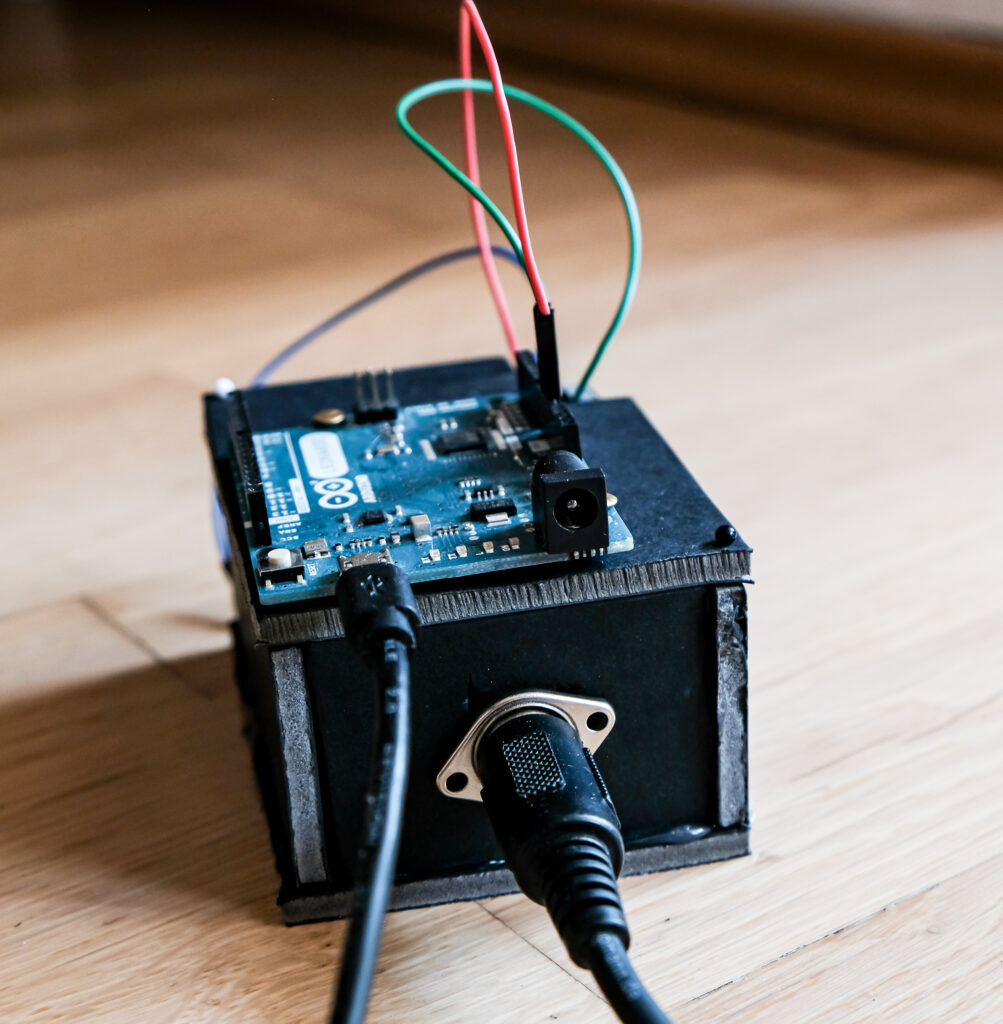As stated in blog post #1, basic OSC transmission capabilities were achieved and thus, the IMU sensor’s data could now be transmitted via OSC to control the parameters of a Wah-Wah effect. The next step was to test this setup in conjuncture with real guitar playing. However, it was decided that a new attachment device for the ESP32 microcontroller was needed.
Prior to using OSC, the right hand setup used MIDI to transmit the sensor data from sensor + microcontroller to Pure Data. The IMU sensor was attached to the microcontroller (an Arduino Leonardo) via a long cable and the microcontroller itself was fitted onto a small housing with a MIDI jack attached to it.

With the ESP32 microcontroller now working wirelessly over OSC, there was no further need for the housing and the long cable. It was instead decided to fit the ESP32 on the right forearm of the guitar player with only a short cable connecting it to the IMU sensor which was still fitted onto the wristwatch. However, it proved difficult to find a way of attaching the sensor to the uneven surface of a human forearm. After some pondering of the issue, the idea was born to use an old sock to wrap around the arm onto which the ESP32, wrapped into a small bag of fabric, could subsequently be sewn. It must be stated that this means of attachment is not yet worthy of the name “final product” and another solution must be found. Nevertheless, for testing purposes the device sufficed. The Wah-Wah effect could be tested using OSC as a means of transmission and it worked as expected. Thus, it can be concluded that the right hand setup now works wirelessly which brings it closer to its ultimate goal of not impairing the guitarist’s natural playing style while still adding another dimension of sound to the guitar.
With the right hand setup working so well, it was time to transform the left hand setup in the same fashion and make it work wirelessly. Having established the basic OSC principles while working on the right hand setup, it was simply a matter of combining the original code made for the ToF sensor with the OSC code. The “new” left hand setup was then immediately tested using the previously made “Solo Mode” Pure Data patch and a guitar. As it was the case with the right hand setup, the wireless left hand setup seemed to work equally well as the MIDI-based setup.
While the transmission of data now works wirelessly via OSC, both setups still require to connect the respective sensors (IMU and ToF sensors) to the ESP32 microcontroller. With both sensor being relatively wide apart from each other, it is likely that two microcontrollers, one for each hand’s setup must be used for the final product.